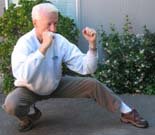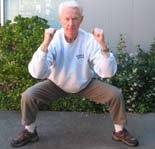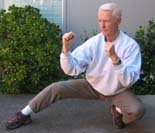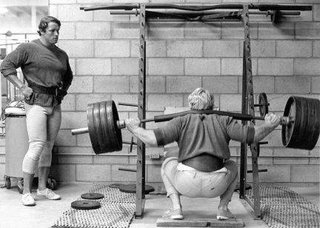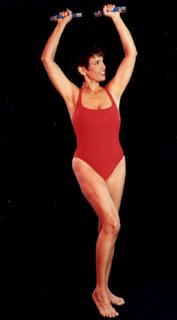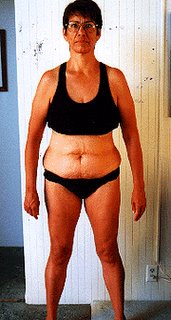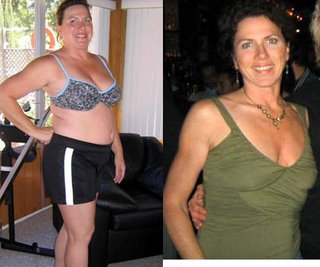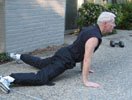The following came in my e-mail.
"Subject: Two Choices
"What would you do? You make the choice! Don't look for a punch line; There isn't one! Read it anyway. My question to all of you is: Would you have made the same choice?
"At a fundraising dinner for a school that serves learning disabled children,the father of one of the students delivered a speech that would never be forgotten by all who attended. After extolling the school and its dedicated staff, he offered a question:
"'When not interfered with by outside influences, everything nature does is done with perfection . Yet my son, Shay, cannot learn things as other children do. He cannot understand things as other children do. Where is the natural order of things in my son?'
"The audience was stilled by the query.
"The father continued. 'I believe,that when a child like Shay, physically and mentally handicapped comes into the world, an opportunity to realize true human nature presents itself, and it comes, in the way other people treat that child.' Then he told the following story:
"Shay and his father had walked past a park where some boys Shay knew were playing baseball. Shay asked, 'Do you think they'll let me play?' Shay's father knew that most of the boys would not want someone like Shay on their team, but the father also understood that if his son were allowed to play, it would give him a much-needed sense of belonging and some confidence to be accepted by others in spite of his handicaps.
"Shay's father approached one of the boys on the field and asked if Shay could play, not expecting much. The boy looked around for guidance and said, 'We're losing by six runs and the game is in the eighth inning. I guess he can be on our team and we'll try to put him in to bat in the ninth inning.'
"Shay struggled over to the team's bench put on a team shirt with a broad smile and his Father had a small tear in his eye and warmth in his heart. The boys saw the father's joy at his son being accepted. In the bottom of the eighth inning, Shay's team scored a few runs but was still behind by three. In the top of the ninth inning, Shay put on a glove and played in the right field. Even though no hits came his way, he was obviously ecstatic just to be in the game and on the field, grinning from ear to ear as his father waved to him from the stands. In the bottom of the ninth inning, Shay's team scored again. Now, with two outs and the bases loaded, the pot ential winning run was on base and Shay was scheduled to be next at bat.
"At this juncture, do they let Shay bat and give away their chance to win the game? Surprisingly, Shay was given the bat. Everyone knew that a hit was all but impossible 'cause Shay didn't even know how to hold the bat properly, much less connect with the ball.
"However, as Shay stepped up to the plate, the pitcher, recognizing the other team putting winning aside for this moment in Shay's life, moved in a few steps to lob the ball in softly so Shay could at least be able to make contact. The first pitch came and Shay swung clumsily and missed. The pitcher again took a few steps forward to toss the ball softly towards Shay. As the pitch came in, Shay swung at the ball and hit a slow ground ball right back to the pitcher.
"The game would now be over, but the pitcher picked up the soft grounder and could have easily thrown the ball to the first baseman. Shay would have been out and that would have been the end of the game.
"Instead, the pitcher threw the ball right over the head of the first baseman, out of reach of all team mates. Everyone from the stands and both teams started yelling, 'Shay, run to first! Run to first!' Never in his life had Shay ever ran that far but made it to first base. He scampered down the baseline, wide-eyed and startled.
"Everyone yelled, 'Run to second, run to second!'
"Catching his breath, Shay awkwardly ran towards second, gleaming and struggling to make it to second base. By the time Shay rounded towards second base, the right fielder had the ball, the smallest guy on their team, who had a chance to be the hero for his team for the first time. He could have thrown the ball to the second-baseman for the tag, but he understood the pitcher's intentions and he too intentionally threw the ball high and far over the third-baseman's head. Shay ran toward third base deliriously as the runners ahead of him circled the bases toward home.
"All were screaming, 'Shay, Shay, Shay, all the Way Shay!'
"Shay reached third base, the opposing shortstop ran to help him and turned him in the direction of third base, and shouted, 'Run to third! Shay, run to third.' As Shay rounded third, the boys from both teams and those watching were on their feet were screaming, 'Shay, run home!' Shay ran to home, stepped on the plate, and was cheered as the hero who hit the 'grand slam' and won the game for his team.
"That day, said the father softly with tears now rolling down his face, the boys from both teams helped bring a piece of true love and humanity into this world.
"Shay didn't make it to another summer and died that winter, having never forgotten being the hero and making his father so happy and coming home and seeing his Mother tearfully embrace her little hero of the day!
"AND, NOW A LITTLE FOOTNOTE TO THIS STORY: We all send thousands of jokes through the e-mail without a second thought, but when it comes to sending messages about life choices, people think twice about sharing. The crude, vulgar, and often obscene pass freely through cyberspace, but public discussion about decency is too often suppressed in our schools and workplaces.
"If you're thinking about forwarding this message, chances are that you're probably sorting out the people on your address list that aren't the 'appropriate' ones to receive this type of message. Well, the person who sent you this believes that we all can make a difference. We all have thousands of opportunities every single day to help realize the 'natural order of things.' So many seemingly trivial interactions between two people present us with a choice: Do we pass along a little spark of love and humanity or do we pass up that opportunity to brighten the day of those with us the least able, and leave the world a little bit colder in the process?
"A wise man once said every society is judged by how it treats it's least fortunate amongst them.
"You now have two choices:
1. Delete
2. Forward
May your day, be a Shay Day, sunny today and tomorrow."


